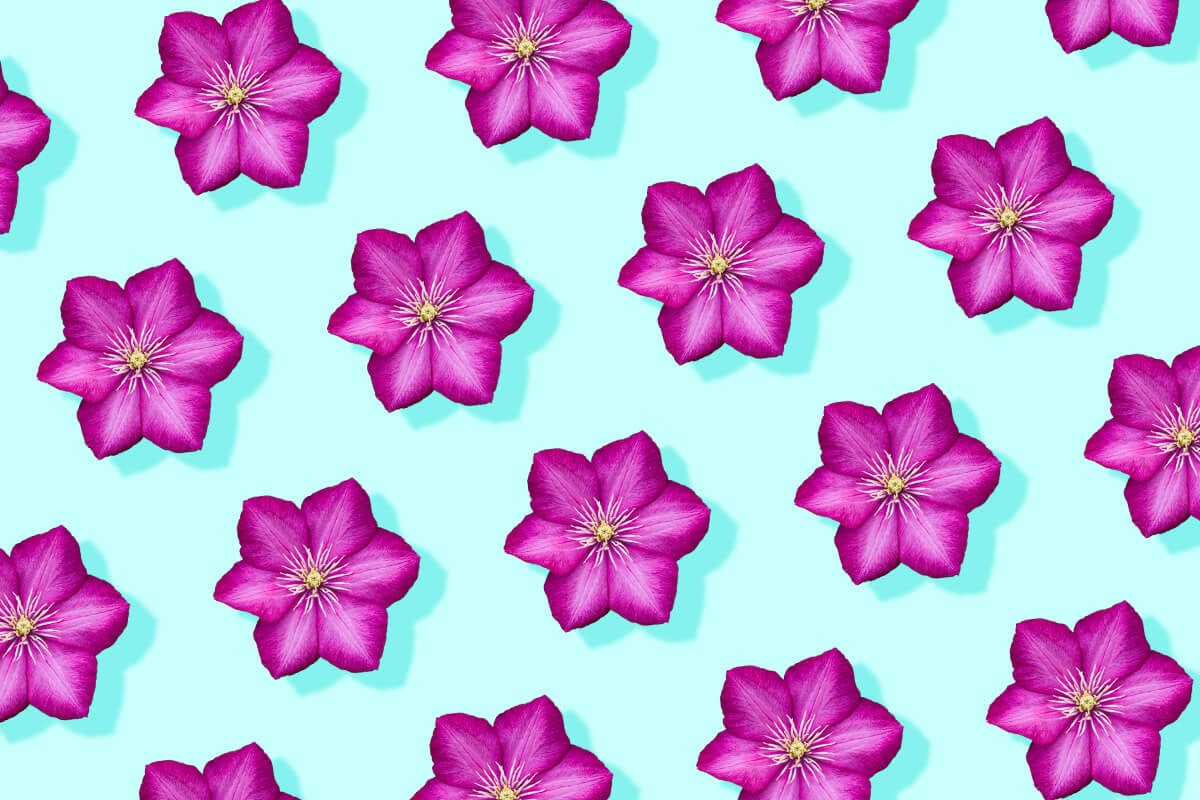Clematis Symbolism: Climbing Toward Dreams, Love, and Legacy
In the language of flowers, Clematis carries the symbolic meaning of joy for travelers, wisdom, and mental prowess. Yet the Victorians also considered the Clematis flower a symbol of poverty, while the Japanese felt it represented moral beauty. It’s also affectionately known as the ‘Queen of the Vines’.

Etymological Meaning
The Greeks had it right from the start. They called it klēmatís—literally “climbing plant”—because that’s precisely what this determined little vine does best.
But here’s where things get interesting: klēma also means “broken branch” or “twig.” Those fragile stems snap if you look at them wrong, yet somehow this seemingly delicate plant can bring down entire trees.
Your clematis might go by different names depending on where you live. “Old man’s beard” describes those fluffy seed heads perfectly. “Virgin’s bower” sounds poetic until you realize it’s probably more about finding shelter than romance.
My personal favorite? “Devil’s darning needle.” Someone clearly had strong feelings about this plant.
The Victorian Language of Flowers
Picture this: you’re a Victorian lady receiving flowers from a suitor. He hands you clematis. Now what? Are you supposed to feel flattered about your mental acuity, or insulted about your supposed poverty? The Victorians really knew how to complicate things.
In floriography, they settled on “mental beauty” as the primary meaning. Wise choice, actually. Clematis does display impressive problem-solving skills—finding creative ways to climb, adapt, and survive. But there’s always been that darker undercurrent. This plant can be destructive, choking out native species and toppling mature trees.
Color Symbolism
Your clematis color choice says something specific, whether you know it or not.
Blue varieties whisper about serenity and wisdom—perfect for meditation gardens or quiet corners where you go to think. White clematis speaks of purity and new beginnings. Purple? That’s all about creativity and maybe a touch of royal ambition.
Red clematis makes a bold statement about passion and energy. But here’s my favorite: those candy-striped varieties that look like they’re dressed for a carnival. They’re pure joy in flower form.
Each color carries emotional weight, but they all share that core clematis message: “I’m going places, and I’ll figure out how to get there.”
The Japanese Connection
Here’s something that might surprise you: those gorgeous clematis varieties in your garden? Many trace their lineage back to Japanese gardens during the Edo period. Japanese gardeners had been cultivating clematis species for centuries before Europeans even knew they existed.
In Japan, they call it tessen—literally “steel wire”—because those seemingly fragile vines are tougher than they look. Japanese artists loved incorporating clematis into kimono patterns and poetry. There’s something poetic about a flower that looks delicate but hides serious strength.
The Japanese understood what we’re still figuring out: clematis embodies contradiction. Beauty and danger. Fragility and tenacity. Grace and aggression.
Association with the Devil
Like many other vigorously growing vines, Clematis is also associated with the devil in some parts of Europe and North America. One variety of Clematis that is native to the East Coast of the US is even called the Devil’s Darning Needle for its pointed buds and seed pods.
Most of these other associations come from the vine’s habit of choking out other plants if its growth is not kept contained. However, most varieties popular for garden growth are easily controlled or not that vigorous.
Old Man’s Beard

Some cultures refer to many varieties of Clematis as Old Man’s Beard due to the fluffy, wispy seed pods that can form on some species of vines.
When a vine completely covering a fence or structure is full of seed pods, it can look like a giant beard waving in the wind. This gives the flower another meaning of wisdom, age, and maturity.
Clematis in Japanese Culture
Japanese gardeners have been breeding and cultivating Clematis for centuries, so it’s no wonder they are part of the Hanakotoba, or Japanese Language of Flowers.
In the practice of ikebana and similar arranging practices, Clematis offers the meaning of “moral and correct beauty.” As with Victorian society, it’s also associated with quick-witted individuals.
Suitable Gifting Occasions

With Clematis symbolizing luck during travel, mental acuity, and joy, they’re great for people leaving home or starting new careers. A graduate or newly hired employee can be cheered on with a bouquet featuring these bold and colorful blooms.
Wrap Up
These beautiful vining flowers belong in the garden of anyone who wants to appreciate their symbolism of joy, travel, and quick wit.
Further reading: Discover the most popular types of clematis to grow at home.
Andrew is the Editorial Director at Petal Republic. He holds a BSc degree in Plant Sciences and has trained professionally at leading floristry schools in London and Paris. In amongst overseeing a global editorial team, Andrew's a passionate content creator around all things flowers, floral design, gardening, and houseplants.
